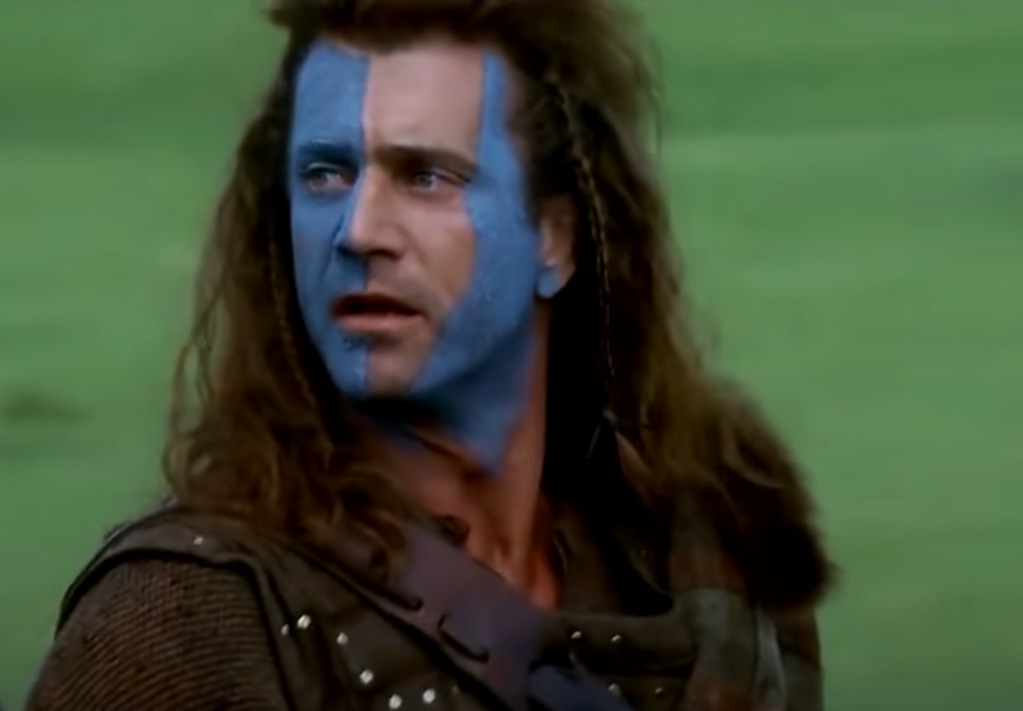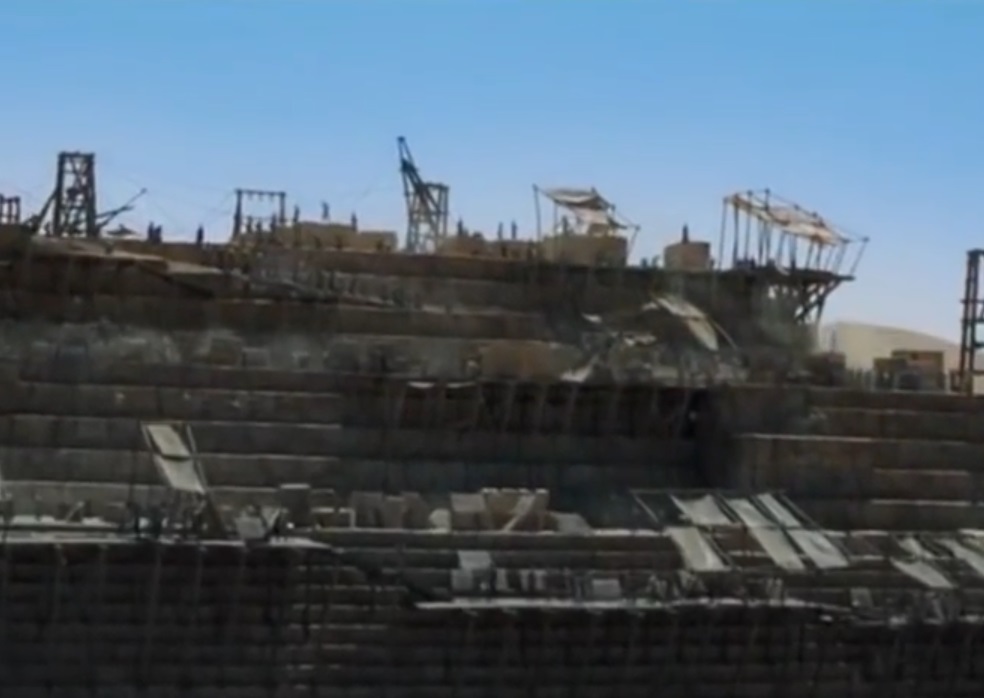Changing The Story
Making a compelling movie out of a true story often involves skewing a few things, but when it comes to certain historical facts, these movies completely missed the mark.

Argo
While Argo was a critical hit and won the Academy Award for Best Picture, the movie has been criticized for certain omissions. The film broadly captures the true events but diminishes Canada's role, especially that of the Canadian ambassador, in the rescue of six U.S. Embassy staff members.
 Warner Bros., Argo (2012 film)
Warner Bros., Argo (2012 film)
Argo
Ambassador Ken Taylor felt misrepresented by the film, believing it minimized Canada's significant contribution. He stated that the film made it seem as though Canadians were merely bystanders, when in fact, they played a vital role in the crisis. Taylor remarked, "It makes it seem like the Canadians were just along for the ride. The Canadians were brave. Period."
JFK
Oliver Stone's JFK, while praised for its filmmaking, has been widely criticized for its historical inaccuracies. One review harshly described it as one of the most appalling travesties of history you're ever likely to see. The film's documentary-style beginning and use of actual footage mislead viewers into thinking it was a factual recounting of events.
JFK
Much of the conspiracy evidence presented in the movie is fabricated, including the false confession of David Ferrie, played by Joe Pesci. Ferrie, a real person, never confessed to any conspiracy, making this portrayal particularly problematic. Many inaccuracies in the film follow this pattern, leading historians to agree that, despite being a well-made movie, it is decidedly a work of fiction.
The Imitation Game
The Imitation Game, a film about cracking the Enigma machine, presents three phases of Alan Turing's life, each filled with inaccuracies, particularly regarding Turing himself. One early dramatization shows Alan learning about his best friend's sudden death. In reality, Alan was forewarned about his friend's condition.
 Black Bear, The Imitation Game (2014)
Black Bear, The Imitation Game (2014)
The Imitation Game
Another significant inaccuracy involves the Soviet spy John Cairncross, depicted as part of Alan's team. While Cairncross was at Bletchley Park, he was not part of Turing's team, and it is highly unlikely they ever met. The film also shows John blackmailing Alan into concealing his espionage, a scenario described as offensive for suggesting Turing would commit treason by hiding a spy at Bletchley Park.
 Black Bear, The Imitation Game (2014)
Black Bear, The Imitation Game (2014)
Braveheart
Mel Gibson's Braveheart, about William Wallace and Scotland's first war for independence, is notorious for its historical inaccuracies. Author John O’Farrell humorously remarked that the film couldn’t have been more off the mark if a plasticine dog was added to the cast and it was retitled William Wallace and Gromit. Even the title is misleading, as Brave Heart referred to Robert the Bruce, not Wallace.
 Twentieth Century, Braveheart (1995)
Twentieth Century, Braveheart (1995)
Braveheart
The film omits key elements such as rebellion leader Andrew de Moray and the actual bridge in the Battle of Stirling Bridge. Wallace's backstory is also altered, erasing his descent from the lowland gentry and depicting him as a marginalized Highland farmer. Further inaccuracies include a fabricated relationship with Isabella of France and the historically inaccurate warpaint on Wallace's face.
 Twentieth Century, Braveheart (1995)
Twentieth Century, Braveheart (1995)
Hamilton
The musical Hamilton, also released as a film on Disney+, has been widely acclaimed but criticized for historical inaccuracies concerning Alexander Hamilton and Aaron Burr. The portrayal of Burr as a pragmatic opportunist without a moral compass ignores his commitment to fighting for the underrepresented. Burr's villainous reputation, perpetuated by Hamilton, was actually crafted by Burr's political rivals.
Hamilton
Upon examining the ideals and actions of both Hamilton and Burr, it becomes evident that Lin-Manuel Miranda may have lionized the wrong man. The musical overlooks Burr's positive contributions, focusing instead on a skewed narrative shaped by historical bias.
Pearl Harbor
The movie Pearl Harbor takes many dramatic liberties, particularly with its portrayal of historical events. One of the most glaring inaccuracies is the depiction of Japanese planes deliberately attacking a civilian hospital, a horrific crime that never actually occurred. Survivor reports consistently recall that Japanese pilots avoided firing on civilian buildings and would often change course to avoid such targets, even at their own risk.
 Touchstone, Pearl Harbor (2001)
Touchstone, Pearl Harbor (2001)
Pearl Harbor
Director Michael Bay admitted to adding this falsehood to make the attack appear more barbaric, which is puzzling given the already devastating reality of the event. The addition of this fabricated scene is unnecessary, as the actual attack was already catastrophic and tragic without needing any embellishments.
 Touchstone, Pearl Harbor (2001)
Touchstone, Pearl Harbor (2001)
Gladiator
In Gladiator, numerous artistic liberties were taken, but one of the most glaring inaccuracies was Maximus’ time in the arena. Turns out the actual gladiator battles were not as brutal as depicted in the film.
Gladiator
The extreme violence shown was usually reserved for prisoners of war and criminals, as gladiators were considered valuable and better protected. Professor David Potter noted, most fights ended with first blood or surrender, not death, and typically involved one-on-one combat, not the chaotic free-for-alls shown in the movie.
 DreamWorks, Gladiator (2000 film)
DreamWorks, Gladiator (2000 film)
Cool Runnings
Cool Runnings, a beloved film based on the true story of the 1988 Jamaican Bobsleigh team, includes many fictional elements. Contrary to the movie's depiction, the real team members were mostly recruited from the Jamaican army, not track sprinters. Additionally, the story of coach Irv was fictionalized, and the team's actual experience at the Olympics differed significantly from what was portrayed on screen.
 Walt Disney, Cool Runnings (1993)
Walt Disney, Cool Runnings (1993)
Cool Runnings
In reality, the Jamaican bobsled team received a warm welcome and were so popular they couldn't leave the Olympic Village without being mobbed by fans. The film's scene where the team carries their sled across the finish line never happened; although the team did experience a crash, they were not forced to push the sled down the track.
 Walt Disney, Cool Runnings (1993)
Walt Disney, Cool Runnings (1993)
Apocalypto
Mel Gibson's Apocalypto, set during the Mayan empire in Central America, takes significant liberties in its portrayal of Mayan culture. The film consistently emphasizes themes of barbarism, depicting the Mayans through a Western lens of savagery. Despite receiving decent critical reviews for its action and acting, experts have found the portrayal of Mayan culture offensive.
Apocalypto
Julia Guernsey, an expert on pre-Columbian Mesoamerica, criticized the film for its racial stereotyping, noting, "There's a lot of really offensive racial stereotyping. They're shown as these extremely barbaric people when, in fact, the Maya were a very sophisticated culture". She also pointed out specific inaccuracies such as the inaccurate hodgepodge of architecture, with incorrect murals, dancing rituals, and other practices distorted to emphasize barbarism.
U-571
The 2000 film U-571, about a US submarine crew's mission to capture an Enigma machine from a German U-Boat in 1942, is riddled with historical inaccuracies. The film appears to be based on Operation Primrose, in which the British ship HMS Bulldog captured an Enigma machine from the damaged German submarine U-110. However, this mission occurred long before the US entered the war.
U-571
By 1942, Britain had already cracked the Enigma code, rendering the film's premise incorrect. The film's numerous inaccuracies, including the date, mission details, and nationalities involved, prompted Tony Blair to condemn it in parliament, calling it an insult to the Royal Navy. The historical distortions in U-571 undermine the true efforts and achievements of the Allied forces.
The Last Samurai
The Last Samurai is an epic action period drama set during the 1877 Satsuma Rebellion against the Westernization of Japan. The film overly romanticizes Japanese culture and the samurai, presenting an idealized version that strays from historical accuracy. For instance, the character of Captain Nathan Algren, played by Tom Cruise, is entirely fictional; no American Civil War veterans were involved in this conflict.
 Warner Bros., The Last Samurai (2003)
Warner Bros., The Last Samurai (2003)
The Last Samurai
Additionally, the film inaccurately depicts the use of ninjas and an overemphasis on sword fights. By the time of the Satsuma Rebellion, ninjas no longer existed, and guns and rifles were already widely in use in Japan. The exclusive focus on sword battles overlooks the prevalent use of firearms, misrepresenting the true nature of the warfare during that period.
 Warner Bros., The Last Samurai (2003)
Warner Bros., The Last Samurai (2003)
10,000 BC
The film 10,000 BC, which follows a tribe of mammoth hunters, is visually impressive but historically and archaeologically inaccurate. Critics, including A.O. Scott, have pointed out its numerous flaws, describing it as a sublimely dunderheaded excursion into human prehistory. One major inaccuracy is the depiction of woolly mammoths helping to build the pyramids.
 Warner Bros., 10,000 BC (2008)
Warner Bros., 10,000 BC (2008)
10,000 BC
This event is not only fictional but also anachronistic, as the pyramids were constructed around 8,000 years after the film's setting. The film's portrayal of prehistoric life and events strays far from historical and scientific accuracy, making it a fanciful rather than factual representation.
 Warner Bros., 10,000 BC (2008)
Warner Bros., 10,000 BC (2008)
The Patriot
Mel Gibson's The Patriot, about the American War of Independence, has faced significant backlash from historians for its portrayal of British and American forces. Critic and historian Stephen Hunter remarked, Any image of the American Revolution which represents you Brits as Nazis and us as gentle folk is almost certainly wrong.
The Patriot
Additionally, the character based on Francis Marion is inaccurately depicted as a heroic family man. In reality, Marion was notorious for persecuting indigenous people and committing atrocities, making him an unsuitable figure to be idealized as a hero. The film's historical liberties distort the true nature of the individuals and events it portrays.
Bonnie and Clyde
Bonnie and Clyde, a film about the infamous criminal duo, perpetuates several myths about their lives and actions. The movie portrays Clyde as a Robin Hood-like figure who robs banks to help poor farmers and eventually becomes a folk hero. However, this romanticized depiction is far from the truth.
 Warner Bros., Bonnie and Clyde (1967)
Warner Bros., Bonnie and Clyde (1967)
Bonnie and Clyde
Author Nate Hendley, in Bonnie and Clyde: A Biography, revealed that the duo were far more nefarious and self-serving. They primarily targeted small-town grocery stores and gas stations, not banks, exploiting working-class people rather than aiding them. The film's narrative strays significantly from the actual criminal exploits of Bonnie and Clyde.
 Warner Bros., Bonnie and Clyde (1967)
Warner Bros., Bonnie and Clyde (1967)
Foxcatcher
Foxcatcher, which tells the story of multimillionaire John Eleuthère du Pont and Olympic wrestler Mark Schultz, includes numerous inaccuracies. The film depicts du Pont enticing Schultz into a physical relationship and forcing drugs on him, a portrayal that Schultz vehemently disputes. In reality, Mark was always wary of du Pont and did not immediately move in with him.
Foxcatcher
Mark Schultz publicly expressed his dissatisfaction with the film, stating on Twitter, Everything I’ve ever said positive about the movie I take back. I hate it. Critics have noted that the depiction of their relationship was more influenced by the filmmakers' perspectives than factual testimony, with one critic describing Foxcatcher as a form of gay-bashing.





















